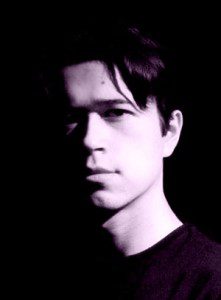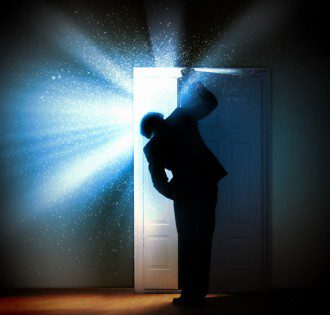By Montalk
Guest Writer for Wake Up World
It is possible to enter a lucid dream directly from waking. Usually this entails lying down, relaxing, and allowing the body to fall asleep while the mind stays awake. Difficulties include falling asleep along with the body, or the body staying awake with the mind. Decoupling body and mind so that the latter can stay awake while the body falls asleep is difficult but possible.
The Process of Sleep
To enter normal sleep we begin by letting our thoughts wander until they turn into daydreams that either dissolve into oblivion along with our self-awareness and volition or else spontaneously evolve into hypnagogic imagery (short vivid hallucinations) that eventually cohere into a full-blown three dimensional dreamscape.
[pro_ad_display_adzone id=”110028″]
Whether drifting off takes us into oblivion or into a vivid dreamscape can depend on how far we are into our nightly sleep cycle. Early in the cycle, sleep tends to consist of delta brainwave activity and no REM (rapid eye movement), which indicates consciousness is off elsewhere. Most likely the soul is running its astral errands while the body does its repairs. Later in the cycle after these tasks are out of the way, or when taking a nap, the delta stage is replaced by immediate onset of hypnagogic and REM activity after mental relaxation. But these are passive dreams since lack of lucidity in them implies impaired volition.
Why are dreams so much more vivid than imagination? Because the images are being projected by the subconscious, not the conscious mind. Why do we lose self-awareness when we go to sleep? Because as we let our thoughts wander, the subconscious starts to influence our consciously projected internal images (imagination, visualization, daydreaming, mind chatter) while the conscious mind takes on a more passive and self-obliterating role. Not long after that, the subconscious takes over the role of projector and that is when mere mental images become virtual realities. The trade-off is that we have already abandoned ourselves by the time the dream projection kicks in.
We can understand the various states of internal imagery as being the result of either the conscious subconscious either directing or projecting these images:
Active dreaming: conscious directs while subconscious projects.
Passive dreaming: subconscious directs and projects.
Daydreaming: subconscious directs while conscious projects.
Visualizing: conscious directs and projects.
Inducing lucid dreams from a waking state therefore requires that the conscious mind retain its awareness and volition while the subconscious is given free reign to begin projecting the dreamscape. The prerequisite is total relaxation of the body, usually done in a step-wise fashion from head to toe, either by focusing on relaxing a particular body region, or tensing and releasing that region. A good exhausting workout that leaves you wiped out can also accomplish this.
Watching Phosphenes
One method of keeping your mind awake while falling asleep involves watching the phosphene images behind closed eyelids. These are the glowing blobs of static noise patterns that always fill our vision but are more easily noticed in the dark. Unlike passive dreaming, this keeps one’s visual faculties active and focused on real sense impressions instead of turning within and getting lost in consciously projected daydreams or visualizations.
Why is this important? Because notice that in dreams your “eyes” are focused on an environment existing “outside” you, seemingly as real as anything you might see with your physical eyes while awake. Also notice that in a dream, despite both your thoughts and the dreamscape being all “in your head”, you can still imagine things internally that are separate from the surrounding dreamscape. This means that the full blown 3D dreamscape is always perceived as an external phenomenon to your five senses, than mere imagination which is internal and runs in parallel to your surroundings. So staring out into the field of phosphenes involves a similarly externalized point of focus, even though eyes are closed. In this way, one aspect of the dream experience (the external visual focus) is already established. It therefore does not take long for hypnagogic images to start up this way, although these can startle one back into full consciousness. With repeated exposure they become less startling, especially if you cultivate a calm, detached, nonplussed attitude and ease into these images without becoming self-conscious and excited, which can snap you awake.
The next issue is becoming so quickly absorbed in the phosphenes and hypnagogic images that one loses self-awareness before the subconscious is ready to begin fully projecting a dreamscape. To counter this, a second technique may be employed: quickly opening and shutting your eyes every two or three breaths. This allows enough real sense data to come in, and is so intentionally controlled, that the mind has better chances of staying alert. And yet since this involves mere movement of the eyelids, the rest of the body is not prevented from doing its thing to fall asleep. One can keep this up until the hypnagogic state kicks in, then continue watching those and the phosphenes.
Sleep Paralysis
Very soon the body falls asleep by entering sleep paralysis, which feels like a sudden sinking, melting, tingling feeling. This is not your body going numb with boredom from having lain still for an hour. Sleep paralysis comes with a release of the soul from the physical body, and that induces the sinking or melting feeling. You may also notice your breathing suddenly becoming deeper, effortless, and automatic as the parasympathetic nervous system takes over. If your mind is still highly active, your breathing restricted, and your body simply numb from lack of stimulation then you’re not in sleep paralysis. You literally have to fall asleep, but with your awareness intact.
The subconscious is then at the verge of fully projecting the dreamscape, and one has only to retain enough self-awareness throughout the onset of sleep paralysis to allow the final consciously directed nudge to kick off a dream. (After catching your body falling asleep, before a dream begins you can visualize and intend to roll out of bed and that will induce an astral projection instead of a dream). Or you can visualize something and “get into it” and that will initiate a dream.
It is the intent combined with visualization that puts the subconscious fully online, and a dream begins. Then you can do reality checks (flipping a light switch, looking for inconsistencies) or astral checks (seeing your body still in bed with correct clothes on) and lucidly go from there.
Take note that because this technique requires immediate access to REM sleep, it must be done after already having slept five or six hours, or during the day when napping. If you’ve had a long day and are beat, and crawl into a cozy bed for lights out, you’ll have a tough time retaining awareness and your brain won’t initiate heavy REM activity right away. Rudolf Steiner talked about remaining aware regardless as being a qualification for occult initiation, and that in doing so you get to witness what happens during the delta non-dream sleep. He says one visits the spirit realm and experiences things there are harmonies and colors (which is probably all that the conscious mind can decode of that experience at first, whereas the subconscious or higher mind during this experience is probably having a very involved time “up there”). But for active dreaming purposes, later in the sleep cycle or during a nap is better.
Some induction techniques start off with visualization, whereby the conscious mind directs and projects mental imagery until the subconscious takes over the role of projector. The above technique of staring into the phosphene void and looking at hypnagogic imagery that arises does not use intentional visualization until the final nudge, thereby allowing the subconscious to start projecting more easily because it does not have to wrestle that role away from the conscious. To repeat, visualization is not necessary until the final stage when the body is asleep, otherwise it might interfere with the subconscious stepping into its role as projector. You can indeed use visualization, and Steiner’s method as well as Theun Mares’ method employ that, whereby an imagined visual suddenly blooms to life when the subconscious takes over and turns it into a dream experience (Steiner himself got that technique from Goethe, who wrote of experiencing exactly such a imagination -> dream phenomenon).
Applications
Why is active dreaming important? Because it allows access to the dreaming faculty at will and is therefore more repeatable at will compared to other methods of lucid dream induction involving autosuggestion, dream signs, periodic reality checks, and so on. However it is also more difficult to implement due to having to be conscious the moment the body falls asleep. But like any activity that requires finesse, whether hitting a golf ball or parallel parking, it can be trained with practice.
When you have achieved this state, which Robert Monroe termed “mind awake, body asleep” then you are effectively on a launch platform for dreaming, astral projecting, scrying, remote viewing, healing, entity evocations, past life exploration, spirit releasement therapy, subconscious reprogramming, communicating with the higher self, etc. This state of mind, which some claim consists of theta brain waves overlapped with high frequency gamma waves, is the state from which most occult maneuvers are performed.
Mnemonic Anchoring
When the body has entered its melted tingly state, it is possible to anchor this mnemonically using some tongue position, breathing pattern, eye movement, visualized sequence of symbols, hand mudra, or command phrase. When the anchor is repeatedly associated with this state, later the anchor can be invoked to cause the body to reflexively enter the state, dramatically shortening the induction procedure. But creating the association takes much repetition. Theun Mares’ technique and the Silva Method employ such mnemonic triggers.
Trance Clairvoyance
If the dream state is induced with the eyes open, then visual perceptions are no longer filtered or interpreted by the normal waking linear mind. Some data streams include energy patterns that normally escape our perception, such as etheric critters, thoughtforms, machinery, or intelligent beings positioned around us. What we see while in this state, or at least the visual image of it, is not actually outside of us but rather projected onto our field of vision from within by the subconscious. The subconscious projector overlays upon the visual field an interpretation of the incoming data stream. It is like an internal HUD (heads up display). Science attributes these to hypnopompic hallucinations, but I doubt these images are always mere phantasms.
Be informed, however, that this state of clairvoyance is not the only way to be clairvoyant. True clairvoyants aren’t in sleep paralysis and halfway detached from their bodies. They are fully in their bodies, however their souls have grown psychic appendages that act as periscopes or transceivers to the occult realm. In this way they can be awake, walking and talking, while peering into the etheric data layer of existence.
Direct Etheric Data Access
You may have noticed that dreams communicate to us messages from the subconscious via symbolic images, plays on words, and allegorical themes. But really the subconscious is just a portal to intelligences outside our linear conscious minds, one of these being the higher self or higher mind. The dream projection, which employs the visual sense mostly, is therefore an indirect communicator allowing information flow across the conscious/subconscious gap. It is possible to do away with the visual aspect entirely and allow direct communion between yourself and the higher self, or at least between your consciousness and the true essence of things rather than their visually interpreted representation. With eyes open, rather than seeing interpretations of the data stream one could, after sufficient levels of development, experience the data directly — this would be equivalent to seeing the “code of the matrix” so to speak.
Conclusion
Exploring inner space can therefore be quite productive, and it is the most rewarding and immediately evident superior alternative to technological substitutes that threaten to disconnect us from our conscious abilities. In terms of detail and effects, lucid dreams far surpass any available video gaming system. Of course it is easier to hit a power button than train to actively dream, but the thought that we carry within us such untapped power does evoke awe.
Previous articles by Montalk:
- Dislodging Negative Entity Attachments
- Wising Up to Alien Interference
- Helper Souls And Their Mission
- Stages Of Conscious Awakening
- Introduction to the Matrix Control System
About the author:
 Tom / Montalk is an author, researcher, and musician dedicated to empowering others with practical esoteric wisdom and technical knowledge. His published works include an extensive website and the books Fringe Knowledge for Beginners and Discerning Alien Disinformation.
Tom / Montalk is an author, researcher, and musician dedicated to empowering others with practical esoteric wisdom and technical knowledge. His published works include an extensive website and the books Fringe Knowledge for Beginners and Discerning Alien Disinformation.
Tom was born in 1980 in central Germany. In early childhood, paranormal phenomena and harrowing alien encounters taught him that reality was strange and mysterious. At age twelve he obtained a library card and began reading all and everything he could find on UFOlogy and spirituality to make sense of his experiences. He also became interested in fringe physics and suppressed inventions after stumbling upon recurring references to alien propulsion systems in UFOlogy literature.
After majoring in physics and electrical engineering for several years, Tom left university to pursue a more independent path of knowledge. Combining his research and personal experiences with those of others, he now dedicates his life to solving the deepest riddles of metaphysics, gnosticism, UFOlogy, hyperdimensional physics, and spiritual warfare. He strives to communicate his findings in a clear and concise manner so that as many people as possible can put such knowledge into practice.
Website: http://montalk.net
Books: http://montalk.net/books
[pro_ad_display_adzone id=”110027″]










